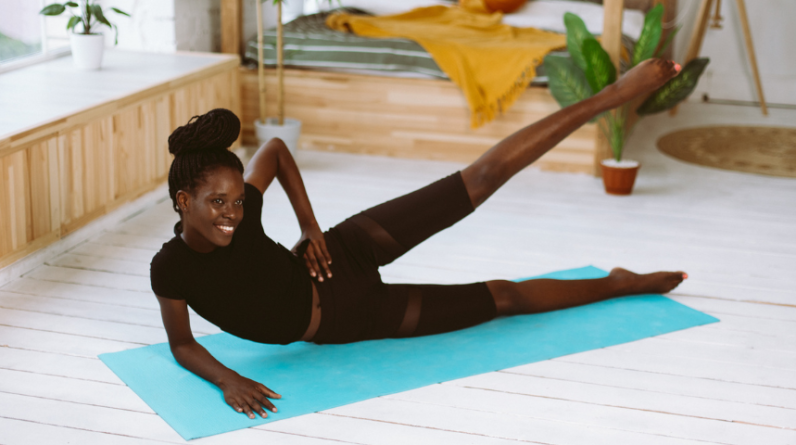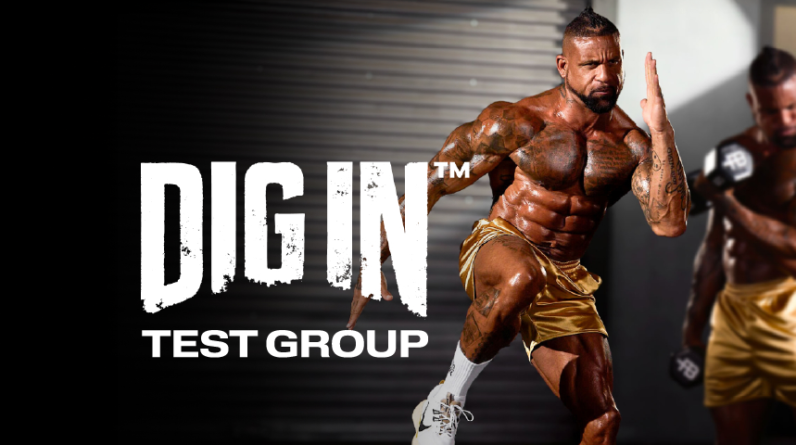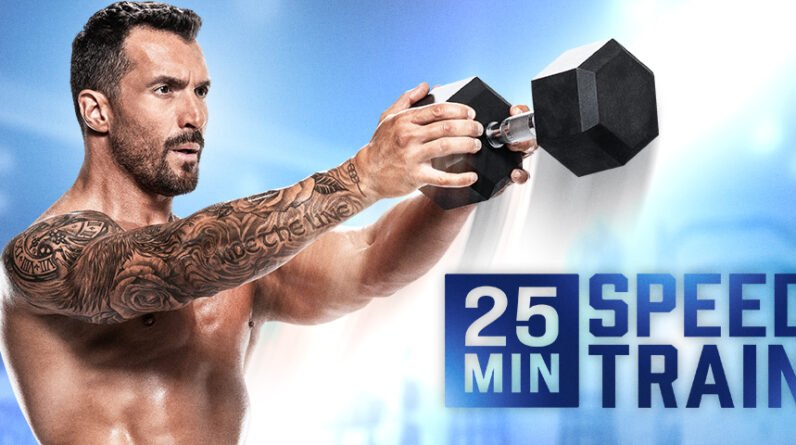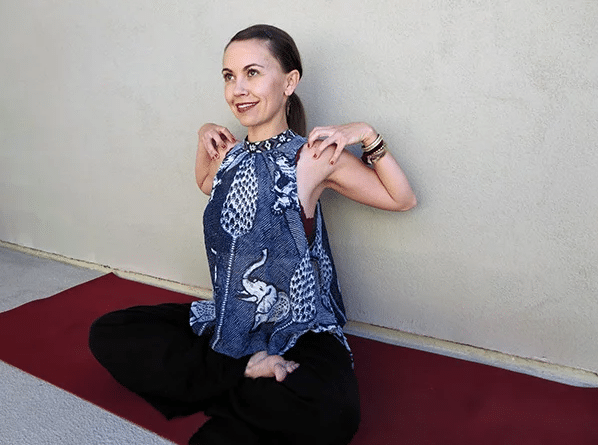
Whether you have lofty athletic goals like setting a marathon PR or want to be able to perform everyday, functional movements like climbing a flight of stairs efficiently and without pain, you need to work gluteus minimus exercises into your training plan.
The gluteus minimus may be the smallest of the three major butt muscles, but don’t let its size fool you; its impact on how you move is monumental. The problem, however, is that it can be hard to target, and not everyone has “gluteus minimus workout” on their list of fitness priorities.
To help you get your rear in gear, we’ve compiled 11 of the best exercises for the gluteus minimus. But before we get to work, let’s learn more about this modest but mighty muscle and why strengthening it is worth your time.
Benefits of Gluteus Minimus Exercises
If it’s a bigger booty you’re after, focusing solely on the gluteus minimus won’t give you the best bang for your buck (that’s a job for the gluteus maximus). However, regularly performing exercises for the minimus muscle has plenty of other critical benefits.
1. Hip stability
In conjunction with the gluteus medius, the gluteus minimus is tasked with hip abduction (moving the leg away from the body’s midline) and pelvic alignment.
Strong gluteus minimus muscles keep your hips stable as you stand, shift weight from one leg to the other, walk, run, climb, and otherwise move from point A to point B.
2. A healthy gait
Related to hip stability is gait, or the way in which someone walks. Individuals with weak gluteus minimus muscles often exhibit Trendelenburg gait, which is when the pelvis tilts or droops downward with each step, resulting in a lurching or limp-like walk.
Strengthening the hip abductors can help prevent (and potentially correct) abnormal movement patterns that can be painful and often lead to injuries.
3. Better balance
Balance is critical to our health and becomes increasingly important as we age — according to the CDC, falls are the leading cause of injury-related death in adults over the age of 65.
Research indicates that hip abductor strength contributes to better balance control, which allows you to avoid falls, deftly navigate obstacles, and literally sidestep potential hazards.
4. Improved athletic performance
Want to jump higher, sprint faster, and accelerate more quickly? Strengthen your glute muscles. As the largest muscle of the body, the gluteus maximus is a main source of power in your lower body.
However, the gluteus minimus and gluteus medius have the important task of stabilizing the body to keep it in alignment and working efficiently, allowing you to channel all of your energy into your athletic performance.
5. Fewer injuries
Chronic and recurring injuries, like patellofemoral pain syndrome (knee pain) and ankle sprains, are often tied to instability and misalignment that stems from weak glutes.
For example, if your gluteus medius and gluteus minimus muscles are weak, your knees may collapse inward, which disrupts the body’s kinetic chain and puts excess pressure on the knee and ankle joint. Exercises for the gluteus minimus muscle can help reinforce proper hip abduction and prevent joint pain and injuries.
Gluteal Muscles Anatomy
The gluteus minimus doesn’t operate in a silo; it’s one part of an interconnected muscle group that functions to extend (straighten) the hips, stabilize the pelvis, and rotate the thighs.
Gluteus maximus
If you know one butt muscle, it’s the gluteus maximus. The largest and most superficial of all the glutes, it’s primarily responsible for the shape and size of your rear. (All those “better booty” workouts you’ve seen on social media are mainly targeting the gluteus maximus.)
Beyond aesthetics, the gluteus maximus functions to extend the hip and rotate the thighs. It originates from the pelvis and sacrum and inserts into the iliotibial tract (IT band) and the top of the thigh bone.
Gluteus medius
The gluteus medius muscle, aka your “side butt,” is a fan-shaped muscle tasked with abducting the leg and rotating the thigh. It’s a key hip stabilizer and, when functioning optimally, keeps the pelvis in proper alignment.
The gluteus medius originates from the ilium (the top of the hip bone) and inserts at the top of the thigh bone.
Gluteus minimus
Located beneath the gluteus medius is the gluteus minimus. The gluteus minimus partners with the gluteus medius to abduct the leg, rotate the thigh, and stabilize the hips and pelvis.
It also originates from the ilium and inserts into the thigh bone.
Biceps femoris
While technically a hamstring muscle, the biceps femoris works in tandem with the glutes to extend the hips, rotate the thighs, and stabilize the hips and pelvis. It also flexes the knee and rotates the lower portion of the leg when the knee is bent.
Located on the outermost part of the back of the thigh, the biceps femoris originates from the pelvis and thigh bone and attaches to the fibula, which is found in the lower leg.
Semimembranosus
Located on the inner thigh, the semimembranous is a hamstring muscle that functions to flex the knee, extend the thigh, and assist in rotating the thigh and lower leg.
It originates from the lower pelvis and attaches to the upper portion of the tibia, a lower leg bone.
Semitendinosus
Between the biceps femoris and the semimembranosus, you’ll find the semitendinosis. Its function mirrors that of the semimembranosus.
It also originates from the lower portion of the pelvis and attaches to the tibia.
11 Essential Gluteus Minimus Exercises
Here are some of the most effective exercises to strengthen your gluteus minimus.
1. Side leg raise
- Lie on your right side with your forearm supporting your upper body, your left leg straight, and your right leg at a 90-degree angle.
- Keeping your core engaged, slowly lift your top leg until you feel your hips begin to tilt upward.
- Pause, and then lower your top leg to the starting position. Complete all reps and then switch sides, performing equal reps on both.
2. Fire hydrant
- Start on all fours with your hands under your shoulders and your knees under your hips. This is your starting position.
- Keeping your hips level and your core engaged (see below for more on that), raise your right knee out to the side as high as you can, and hold for 1 second.
- Lower your right leg to return to the starting position, and repeat for a total of 15 reps. Then switch sides and repeat the sequence.
3. Clamshell
- Lie on your right side with your feet and hips stacked, your knees bent 90 degrees, and your head resting on your right arm.
- Draw your knees in toward your body until your feet are in line with your butt. Place your left hand on your left hip to ensure it doesn’t tilt backward. This is your starting position.
- Keeping your abs engaged and your feet together, raise your left knee as far as you can without rotating your hip or lifting your right knee off the floor.
- Hold for 1 second, squeezing your glutes at the top of the move, before slowly lowering your left knee to the starting position.
- Continue for a total of 20 reps, then repeat on the other side.
4. Side lunge
- Holding a pair of dumbbells at your sides, stand with your feet hip-width apart.
- Keeping your feet parallel and your core engaged, step your right foot wide to the right without bending your left knee.
- Keeping your left leg straight, your chest up, and your back flat, bend your right knee, sit your hips back, and lower your body until your right thigh is parallel to the floor. The dumbbells should frame your right leg at the bottom of the move.
- Reverse the movement to return to the starting position.
- Repeat on the left side, and continue alternating sides, performing equal reps on each.
5. Curtsy lunge
- Stand with your feet hip-width apart and your hands on your hips or holding dumbbells by your sides.
- Keeping your back flat and your core engaged, step your left foot behind and outside your right foot, lowering your hips until your right thigh is parallel with the floor. Your left knee should hover an inch or two above the floor.
- Reverse the movement to return to the starting position. Continue for reps, then switch sides and repeat.
6. Banded lateral walk
- Fit a looped resistance band around your legs just above both knees, and stand with your feet together.
- Keeping your back flat and abs engaged, push your hips back, bend your knees, and lower your body into a squat, shifting your weight toward your heels.
- Maintain the squat as you simultaneously raise your hips several inches and step your right foot out to the right, then lower your hips fully.
- Again raise your hips several inches as you bring your left foot together with your right, and lower again fully, maintaining tension in the band so that your knees don’t cave inward.
- Repeat to the opposite side, alternating sides for reps. Perform equal reps on each side.
7. Side plank hip lift
- Lie on your left side propped up on your left elbow and forearm, shoulders stacked over your elbow, legs stacked on top of each other, and hold a dumbbell in place on top of your right hip.
- Raise your hips so that your body forms a straight line from head to heels. This is the starting position.
- Keeping your core braced and your glutes engaged, slowly lower your left hip, tapping it gently on the floor.
- Reverse the move, returning to side plank position.
- Repeat for reps, then switch sides, performing equal reps.
8. Sumo squat
- Stand with your feet wider than your shoulders and your arms at your sides. Turn your feet slightly outward. This is the starting position.
- Keeping your chest up and core engaged, push your hips back, bend your knees, and lower your body until your thighs are at least parallel to the floor. As you squat down, bring your hands together in front of your chest.
- Pause, and then return to the starting position.
9. Single leg deadlift
- Stand with your feet hip-width apart, holding a dumbbell by your ride side at arm’s length, palms facing your body.
- Shift your weight onto your left foot, and lift your right foot several inches off of the floor behind you. This is the starting position.
- Keeping your left leg slightly bent, your back flat, and your core engaged, push your hips back into a hinge and lower the weight until your torso is nearly parallel to the floor, raising your right leg behind you. Keep the weight close to your body throughout the move.
- Pause, and then lower your right leg to return to the standing position. Perform equal reps on both sides.
10. Lateral step-up
- Stand with your right side facing a bench or box that’s about knee height, holding a pair of dumbbells at arms’ length by your sides, palms facing in.
- Place your right foot on the middle of the bench. This is the starting position.
- Keeping your chest up and core engaged, push your body up with your right leg until it’s straight (don’t let your left foot touch the bench).
- Pause, and then lower your body back to the starting position. Perform equal reps on both sides.
11. Spiderman plank
- Start in a forearm plank position with your elbows underneath your shoulders, feet about hips-width apart. Engage your core, squeeze your glutes, and make sure your neck is in line with your spine so that there is a straight line from your head to heels.
- Keeping your hips as level as possible, bend your right leg to bring your right knee as close as possible toward your right elbow. Pause, and then step back to the plank position.
- Repeat on your left side, bringing your left knee up to your left elbow.
- Continue alternating sides until all reps are complete.







